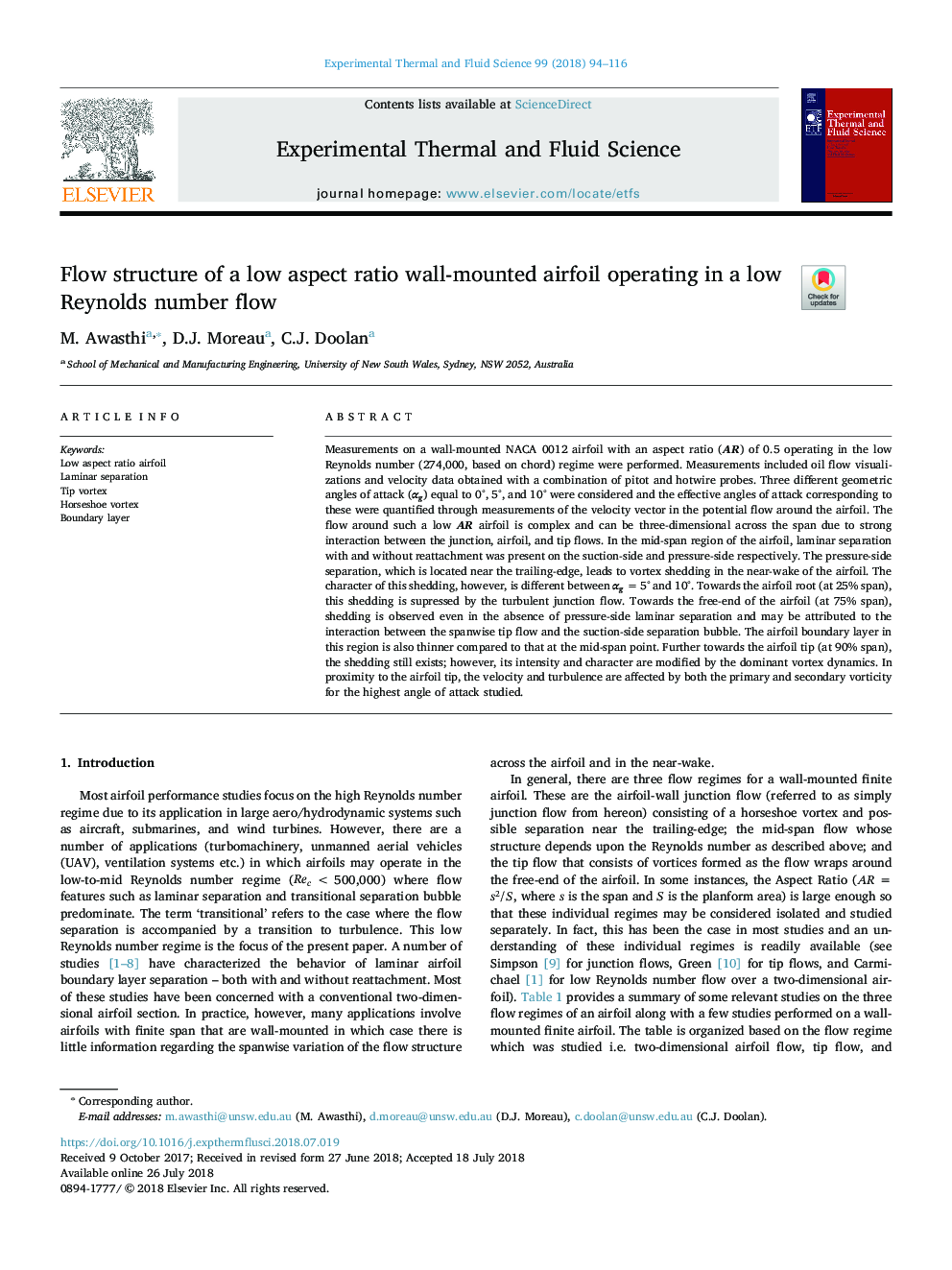| Article ID | Journal | Published Year | Pages | File Type |
|---|---|---|---|---|
| 7051439 | Experimental Thermal and Fluid Science | 2018 | 23 Pages |
Abstract
Measurements on a wall-mounted NACA 0012 airfoil with an aspect ratio (AR) of 0.5 operating in the low Reynolds number (274,000, based on chord) regime were performed. Measurements included oil flow visualizations and velocity data obtained with a combination of pitot and hotwire probes. Three different geometric angles of attack (αg) equal to 0°, 5°, and 10° were considered and the effective angles of attack corresponding to these were quantified through measurements of the velocity vector in the potential flow around the airfoil. The flow around such a low AR airfoil is complex and can be three-dimensional across the span due to strong interaction between the junction, airfoil, and tip flows. In the mid-span region of the airfoil, laminar separation with and without reattachment was present on the suction-side and pressure-side respectively. The pressure-side separation, which is located near the trailing-edge, leads to vortex shedding in the near-wake of the airfoil. The character of this shedding, however, is different between αgâ¯=â¯5° and 10°. Towards the airfoil root (at 25% span), this shedding is supressed by the turbulent junction flow. Towards the free-end of the airfoil (at 75% span), shedding is observed even in the absence of pressure-side laminar separation and may be attributed to the interaction between the spanwise tip flow and the suction-side separation bubble. The airfoil boundary layer in this region is also thinner compared to that at the mid-span point. Further towards the airfoil tip (at 90% span), the shedding still exists; however, its intensity and character are modified by the dominant vortex dynamics. In proximity to the airfoil tip, the velocity and turbulence are affected by both the primary and secondary vorticity for the highest angle of attack studied.
Related Topics
Physical Sciences and Engineering
Chemical Engineering
Fluid Flow and Transfer Processes
Authors
M. Awasthi, D.J. Moreau, C.J. Doolan,
